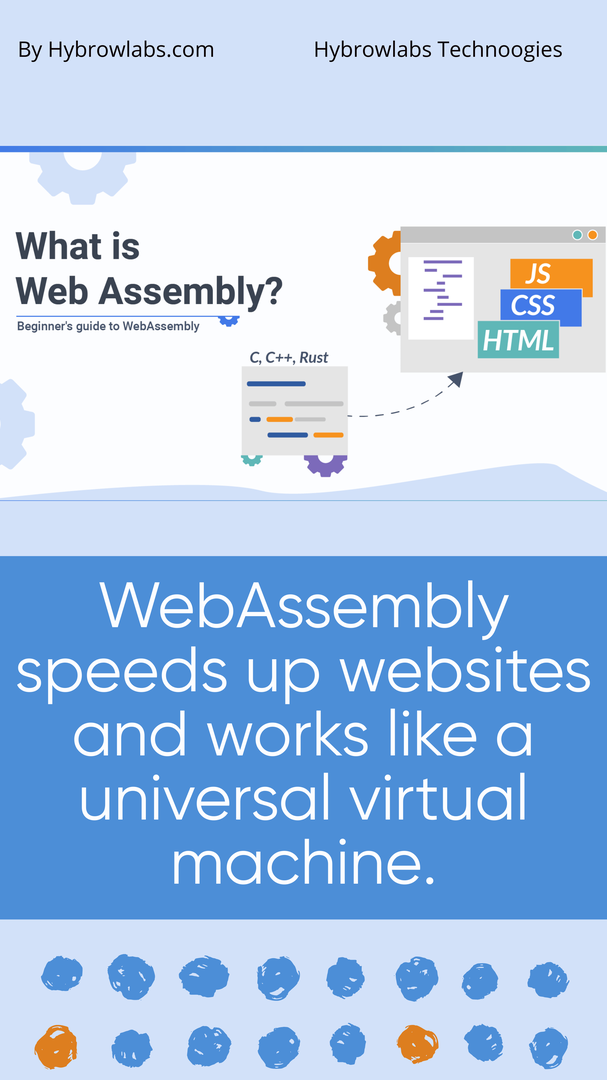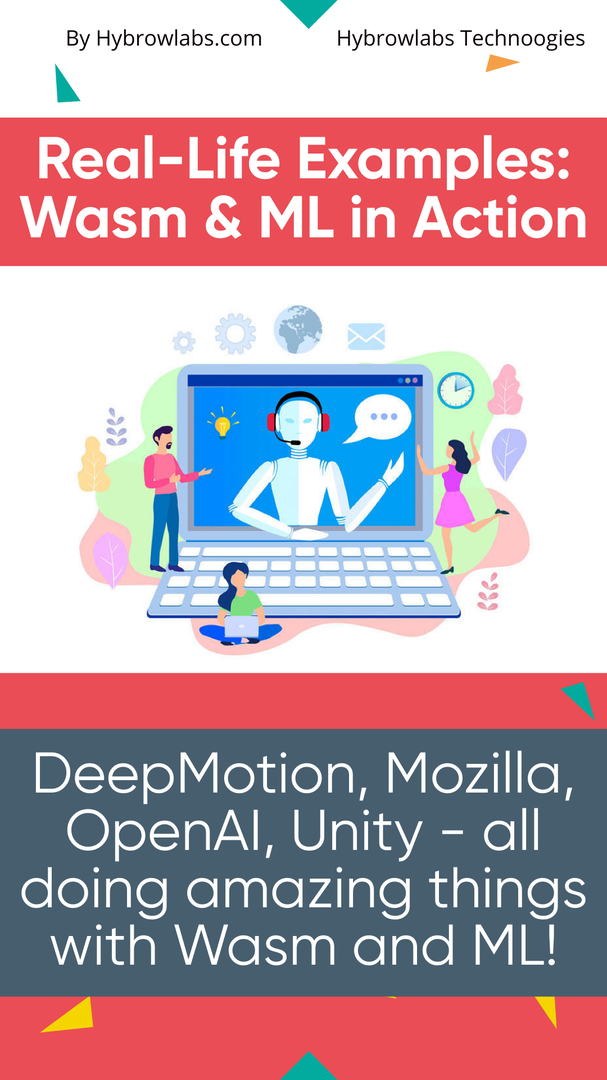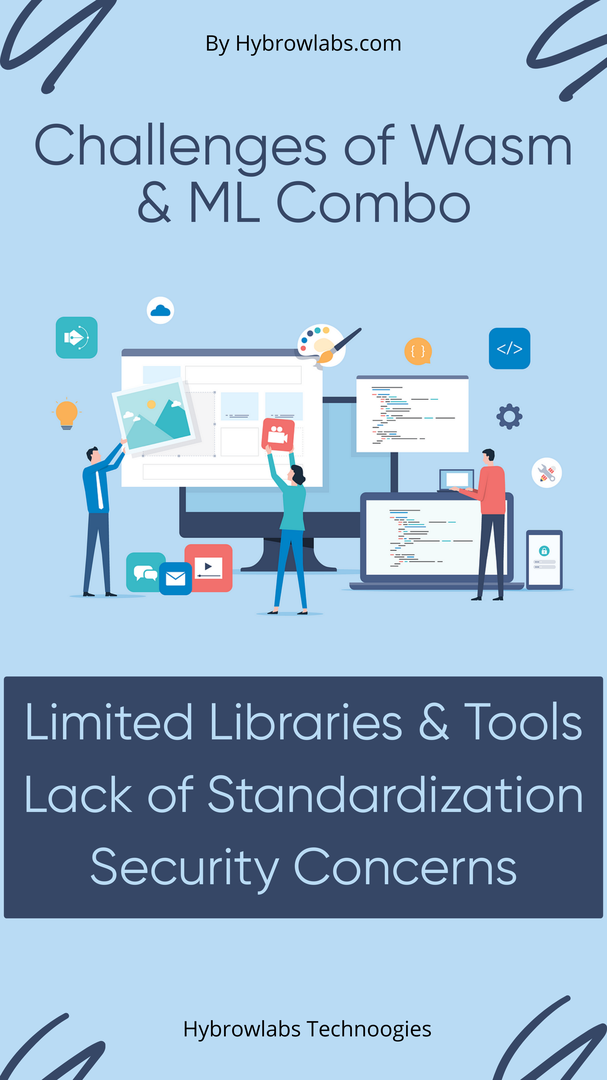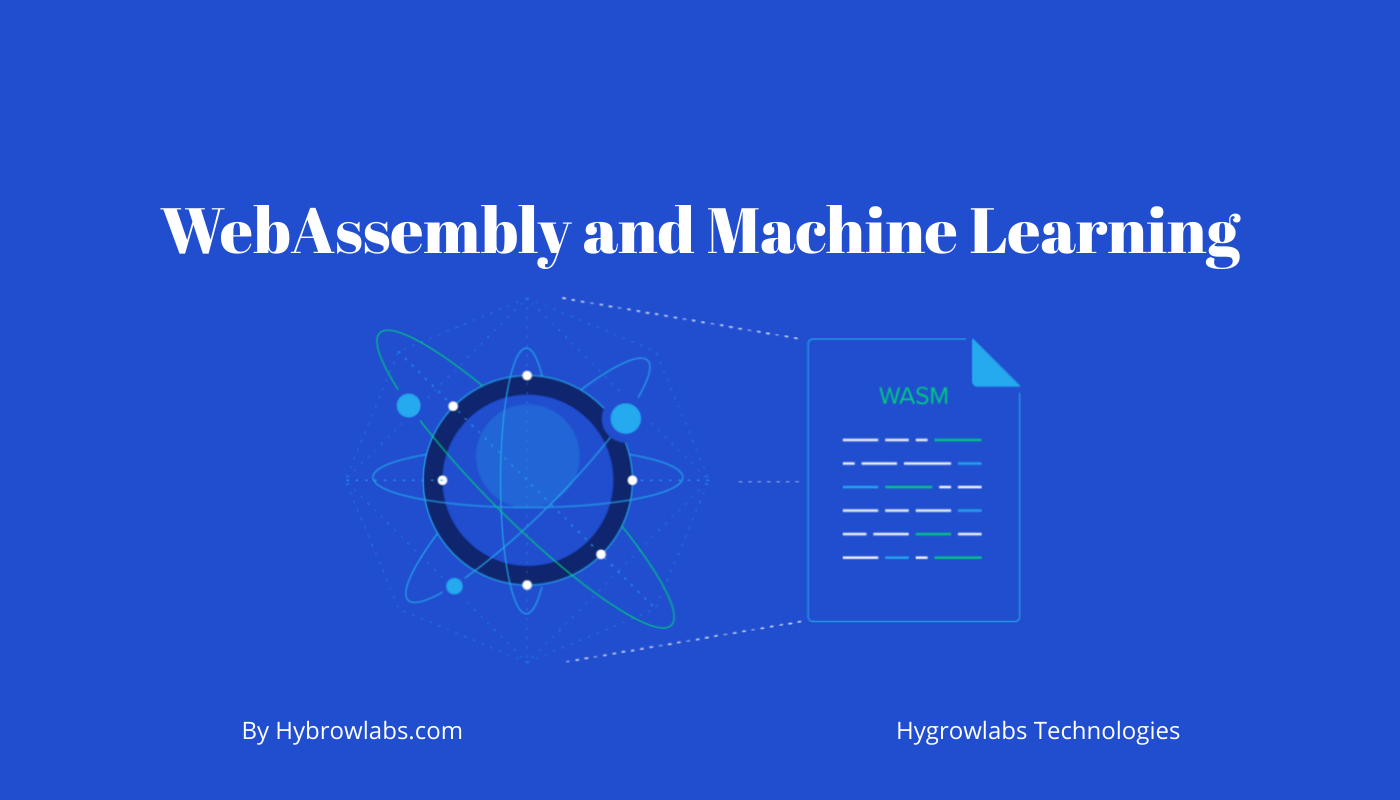
Two cutting-edge technologies that have revolutionized how we create and utilize software are WebAssembly and Machine Learning. Developers now have more opportunities to explore and chances to produce applications that are quicker, more effective, and more powerful. What happens if we combine them? Yes, WebAssembly and Machine Learning work extremely well together to build incredible applications that were previously unimaginable. In this article, we will explore how WebAssembly and Machine Learning can work together and what benefits they bring to the table. So, buckle up and get ready to discover the future of software development!
What's WebAssembly and How Can It Help You?

Do you remember a time when a website took a long time to load? It might have been a website with plenty of visuals and animations or a great game. Well, the fact that these websites frequently use the computer language JavaScript which is one of the reasons why they can be slow to load. WebAssembly (Wasm) can help with it. Wasm is a new technology designed to make websites operate more quickly and effectively. It functions similarly to a universal virtual machine that can run programs created in various programming languages.
How does WASM work?
Well, a file containing the Wasm code is loaded when a website employs Wasm. This file can be downloaded fast because it is typically quite little. Then, the Wasm code is run in a unique "sandbox" environment whenever the website needs to run some code (like when you start a game or click a button). This sandbox ensures that the code cannot harm your machine or your data in any way.
What makes WASM so special?
- One of the key advantages is that it can operate considerably more quickly than JavaScript. This is because it can take some time for JavaScript code to be "translated" into a language that your computer can understand. Wasm, however, already has the code in a form that your computer can understand, which allows it to execute considerably more quickly.
- The fact that Wasm is not dependent on any one particular programming language is another awesome feature. That implies that programmers can write code in any language of their choice—including Python, C++, and Rust—and then "compile" it into Wasm code. Developers will find it simpler to reuse pre-existing code and libraries in their web apps as a result.
What’s the magic of Machine Learning?

Machine Learning (ML) is a way of teaching computers to learn and make decisions without being explicitly programmed. It's like training a pet to do tricks - you show them what to do a few times and they learn how to do it on their own. In ML, we feed the computer lots of examples and it figures out how to recognize patterns and make predictions based on that data. The more examples it sees, the better it gets at making accurate predictions.
Why ML?
- In web development, ML can be used to improve the user experience by personalizing content and recommendations based on user behaviour. For example, an e-commerce website can use ML to recommend products based on a user's purchase history or browsing behaviour.
- ML can also be used to detect and prevent fraud by analyzing user behaviour and identifying patterns that indicate fraudulent activity.
- Additionally, ML can be used to automate tasks such as content moderation and customer support, freeing up human resources for more complex tasks.
Ready to Run ML Models in Your Browser? Learn How Wasm Makes It Possible!
Wasm is the best option if you want to build robust, interactive applications that can do things like recognize images or translate languages. Wasm is like a magic trick for your web browser because it lets you run machine learning (ML) models right in your browser! It's like having a little computer inside your browser that can do all the hard work for you.
Developers may build robust, interactive applications that react in real time to user input by running ML models in the browser. Consider a website that allows you to upload a photo and then utilizes machine learning to identify the things in the photo. With Wasm, this machine learning model can be run directly in your browser, giving you access to the findings without having to wait for a server to respond.
Wasm also provides a secure, sandboxed environment for running code, which is important for ML models that may contain sensitive data or require high levels of computation. This means that you can use ML models in your web applications with confidence, knowing that your users' data remains secure and private.
Want to See Wasm and ML in Action? Check Out These Incredible Real-Life Examples from Top Companies!

Let me tell you about some companies that have been doing some amazing things with WebAssembly (Wasm) and machine learning (ML).
1. DeepMotion:
A company called DeepMotion specialises in producing physics-based animations that are realistic for use in video games and other applications. They employ ML to produce more lifelike animations and Wasm to accelerate animations and optimise code.
2. Waymo:
The self-driving car company Waymo combined Wasm and ML to develop a system that can recognise and track objects in real time. To operate safely on the road, self-driving cars need this.
3. Mozilla:
Mozilla, the company responsible for the Firefox web browser, is another example. Mozilla has developed a real-time speech recognition system using Wasm and ML. This makes it feasible to create voice-controlled programmes that run directly in the browser since you can speak to your computer and it will instantly translate what you say.
4. OpenAI:
The AI research facility OpenAI has also been utilising Wasm and ML to perform some truly amazing things. A real-time image identification system that can instantly identify objects in photos has been developed. This is pretty fantastic and gives developers a tonne of options for creating interactive programmes that react to user interaction.
5. Cloudflare:
CloudFlare, a web security and performance company, used Wasm and ML to create a new tool called Cloudflare Bot Management. This tool uses ML models to identify and block bot traffic in real time, and Wasm helps to optimize the performance of these models. The result is a highly effective tool that can help website owners protect their sites from malicious bots.
6. Unity:
Unity, a popular game development platform, used Wasm and ML to create a new feature called Unity Barracuda. This feature allows developers to run ML models directly within the Unity game engine, making it easier to create intelligent game characters and NPCs. Wasm helps to optimize the performance of these models, making them run faster and more efficiently.
What Happens When Wasm Meets ML? Unveiling the Powerful Benefits of Their Collaboration!

When used together, WebAssembly and Machine Learning offer several benefits:
1. Faster Processing Speeds:
By using WebAssembly, it is possible to improve the speed and performance of machine learning algorithms. This is because WebAssembly allows for the efficient execution of low-level code, which can help to reduce the amount of time that is required to process data.
2. More Efficient Use of Resources:
WebAssembly also allows for more efficient use of resources. By offloading some of the processing work to the client side, it is possible to reduce the load on the server and improve overall system performance.
3. Easier Integration:
Another benefit of using WebAssembly and Machine Learning together is that they can be easily integrated into web-based applications. This makes it easier for developers to create intelligent systems that can be accessed from anywhere with an internet connection.
Discover the Exciting Use Cases for Wasm and Machine Learning!
There are many potential use cases for WebAssembly and Machine Learning, including:
1. Facial Recognition:
Facial recognition is a field of machine learning that is focused on identifying individuals based on their facial features. For usage in web-based applications, facial recognition algorithms can be quickly and effectively created using WebAssembly.
2. Speech Recognition:
The identification of spoken words and their conversion into text are the main goals of speech recognition, another area of machine learning. The development of speech recognition algorithms for use in web-based applications is possible with the aid of Web Assembly.
3. Natural Language Processing:
The study of machine learning techniques that are specifically geared towards understanding and interpreting human language is known as natural language processing. The development of NLP algorithms for use in web-based applications is possible utilizing Web Assembly.
Overcoming the hurdles of this combination:

Despite the many benefits of using WebAssembly and Machine Learning together, several challenges must be addressed:
1. Limited Libraries and Tools:
The lack of available libraries and tools is one of the main obstacles to combining WebAssembly and Machine Learning together. This may make it challenging for developers to design and use WebAssembly to build machine learning algorithms.
2. Lack of Standardization:
The absence of standards within the WebAssembly ecosystem presents another difficulty. This can make it challenging for developers to write code that works across various platforms and browsers.
3. Security Concerns:
Finally, integrating WebAssembly and Machine Learning together raises security issues that need to be resolved. Low-level code can be run in the browser thanks to WebAssembly, but dangerous code can also run there.
What's Next for Wasm and ML? Peek into the Future of These Game-Changing Technologies!

Despite these challenges, there is a lot of potential for the future development of WebAssembly and Machine Learning. The future of WebAssembly (Wasm) and machine learning (ML) looks incredibly exciting, as these two technologies are set to change the industry in ways that we cannot yet imagine. In the coming years, we can expect to see:
- Rapid developments in both Wasm and ML, as well as an increase in their integration and use together.
- More libraries and tools for creating machine learning algorithms in WebAssembly
- Standardization of the WebAssembly ecosystem
- Improved security features for WebAssembly
As these developments occur, we can expect to see more and more powerful machine learning applications being developed for the web.
Conclusion
In conclusion, the pairing of WebAssembly (Wasm) and machine learning (ML) is truly a match made in heaven. Wasm's ability to execute code at near-native speeds, combined with ML's capacity to learn from data and improve over time, make them the perfect duo for creating efficient and intelligent applications. As we move forward, we can expect to see more innovations and developments in these technologies, opening up new opportunities and possibilities for businesses and individuals alike.
For those interested in harnessing the power of Wasm and ML, Hybrowlabs WebAssembly Development Services offer expert support to help you unlock their potential. The future of Wasm and ML is bright, and we can't wait to see what lies ahead.
FAQs
1. What are the advantages of combining WebAssembly and machine learning?
Combining WebAssembly and Machine Learning can lead to faster processing times, more effective resource use, and simpler integration into web-based applications.
2. What possible applications of WebAssembly and Machine Learning are there?
Natural language processing, facial recognition, speech recognition, and many other applications are all possible with webassembly and machine learning.
3. What are the difficulties in combining WebAssembly and Machine Learning?
Limited libraries and tools, a lack of standards, and security issues are a few of the difficulties.
4. How is WebAssembly used in Machine Learning?
WebAssembly can be used to run machine learning models in the browser, enabling faster and more efficient processing of data. It allows developers to write high-performance code that can be run on any platform, without worrying about compatibility issues.
5. What are some examples of WebAssembly and Machine Learning in action?
Some examples include TensorFlow.js, which is a JavaScript library for training and deploying machine learning models, and ONNX.js, which is a library for running machine learning models in the browser using Wasm. Other examples include the use of Wasm for image and speech recognition, natural language processing, and recommendation systems.






a3dc85.jpg)

.jpg)
fd8f11.png)


.jpg)
.jpg)